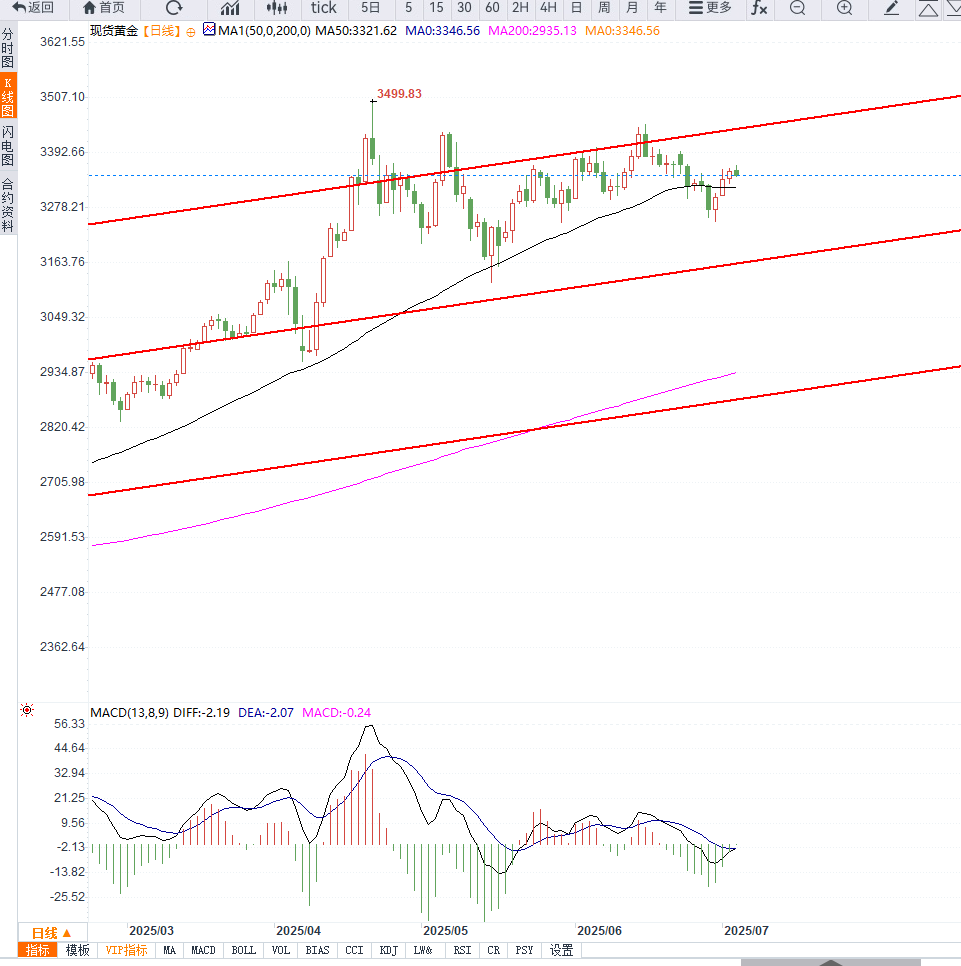Before the US non-farm data, gold maintained a small fluctuation, waiting for the direction to be chosen after the data is released
2025-07-03 10:28:38
The market is paying attention to the upcoming US non-farm payrolls report for June. Analysts expect only 106,000 new jobs, which would be a four-month low if true. At the same time, ADP data showed that US corporate employment shrank for the first time in more than two years, raising market concerns about a slowdown in economic momentum.
One macro strategist pointed out: "If the official employment data is also significantly weak, the Fed may start cutting interest rates as early as this month."

Interest rate expectations have become a core variable that influences gold prices. Although Fed Chairman Powell recently emphasized "patiently watching" to assess the impact of tariffs, a significant deterioration in the labor market may break the wait-and-see stance. As an interest-free asset, gold usually performs better in a downward interest rate cycle.
Safe-haven demand is still supporting the long-term upward trend of the gold market. So far, the cumulative increase in gold this year has exceeded 25%, mainly driven by multiple factors such as the tense international situation, investors seeking hedging tools, and global central banks continuing to increase their gold holdings. Data shows that gold ETF holdings have also continued to rise.
A precious metals trader pointed out: "The continued gold purchases by the central bank and the inflow of ETF funds indicate that institutions still have a strong desire to allocate gold in the long term."
Fiscal deficits and trade policies are also potential drivers of gold prices. The tax cuts and spending bills promoted by US President Trump are expected to increase the federal deficit by $3.4 trillion over a decade, raising concerns among investors about the sustainability of US debt, further increasing gold's safe-haven appeal.
In terms of trade negotiations, investors are paying attention to the progress of the US-Vietnam agreement. Trump recently said that he had reached an agreement with Vietnam, easing some market concerns about the uncertainty of tariff policies. However, the upcoming tariff decision deadline on July 9 may still cause market sentiment to fluctuate.
From the daily chart, the overall gold price remains in an upward channel, and the short-term technical pattern is bullish. At present, spot gold is firmly above the $3,300 mark, and the short-term 5-day and 10-day moving averages are in a golden cross arrangement, supporting continued bullishness.
The RSI indicator is in the 60-65 range, not yet in the overbought zone, but showing a solid bullish momentum. The MACD fast and slow lines continue to rise, and the red column momentum is increasing, suggesting that the upward momentum has not yet ended. If the gold price can effectively break through the $3,370 resistance level, it is expected to further test the previous high of $3,450; the key support level below is between $3,315 and $3,275.

Editor's opinion:
Gold is currently in a tug-of-war between technical strength and policy uncertainty. If the non-farm payrolls data this week is significantly lower than expected, it may open up a further upward channel for gold prices. However, if the labor market remains resilient, the Fed's interest rate cut expectations may be delayed, and gold prices are vulnerable to selling pressure in the short term.
We need to pay attention to the linkage between the U.S. dollar and U.S. bond yields to determine the next trend of gold. In addition, in the long run, deficit risks and central bank buying will continue to support gold.
- Risk Warning and Disclaimer
- The market involves risk, and trading may not be suitable for all investors. This article is for reference only and does not constitute personal investment advice, nor does it take into account certain users’ specific investment objectives, financial situation, or other needs. Any investment decisions made based on this information are at your own risk.










